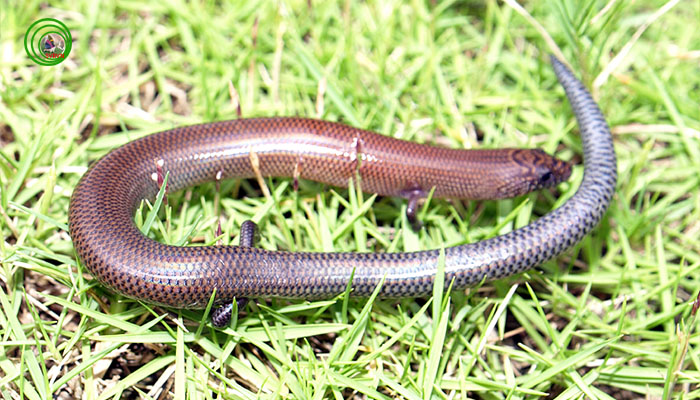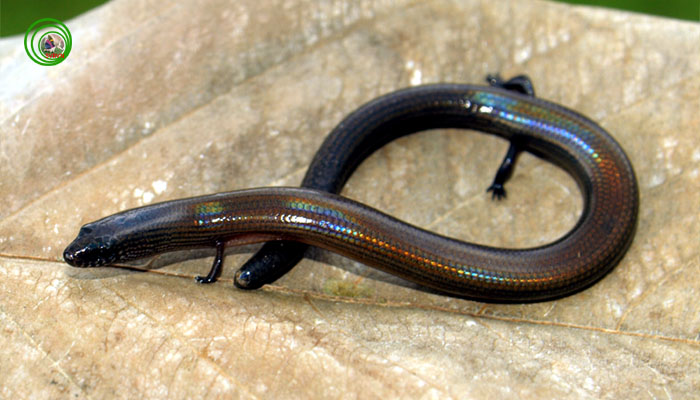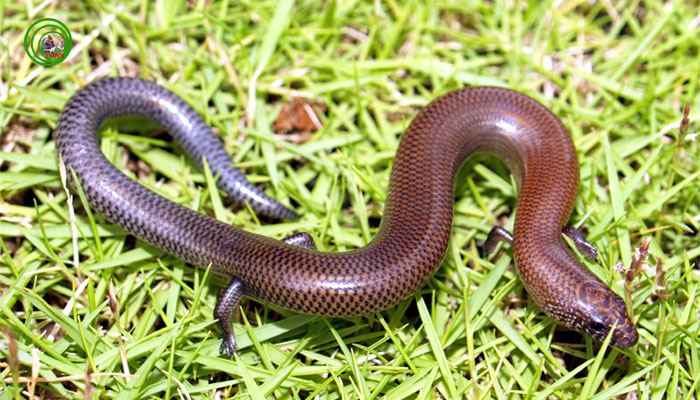|
THE JOURNEY LOOKING FOR “RARE LIZARD”
Phung My Trung - Nguyen Thi Lien Thuong - ADMIN
“Oh I saw a snake with feet, really!”,my friend An, a ranger, was very sure about the strange animal he'd seen in Dinh Mountain . He affirmed it was not any kind of lizard or skink he'd ever known.” It both looks like a snake and a lizard. I didn't dare to catch it ‘cause it may have venom”, he said. He'd never seen such a strange species like that before. A glance in my head made me think that it might be one of the two species of snake-like lizard in Vietnam , Lygosoma angeli . It was almost 90 years since the first specimen of this species had been collected by a French biologist in Trang Bom, Dong Nai. Since that time, no one has ever seen it again and it was thought to be extinct. “Could it be possible that w rithing skink ?”, I was full of hope.
Last investigating trip
I believed in An and the “snake with feet” became my objective in continuous trips to Dinh Mountain . Unluckily, I failed to find it even after many journey for years.
On an afternoon of September, we faced the last rain of rainy season fell i mpetuous ly to the imposing Dinh Mountain . The stream of muddy water flowed as if it wanted to sweep away any obstacles on the way. There were only some mosses on the vertical rocky wall of the mountain. In next days, it would begin the dry season, a very difficult time for moss when they had to sleep in dry and wait for the next rain coming.
|

|
|
| |
Lygosoma angeli Picture: Nguyen thi Lien Thuong |
|
So did the lizard Lygosoma sp. . When the rainy season ended, they would disappear and hibernate for months inside the cracks of big stones. For that reason, this might be my final chance to search for them this year.
WET IN RAIN AND SWEAT
The night came and brought an inky-black dark to the mountain. With heavy bag full of tools and headlamp, the three of us quietly climbed to the middle of the mountain where it is the suitable habitat for the lizard and it was first seen by An. We stopped to prepare and then every single corner, leaf litter was looked up carefully. Even heavy stones which needed the strength of three of us to turn upside down were moved to search for the lizards.
It still rained but we were wet with hot sweat . Silent was the forest. Sound of night eating birds and anxious calls of amphibians for their lover were from somewhere around us. Time pasted slowly and it was almost 2a.m. A large area of rocks and dry leaves was turned over but not a single lizard was seen. We were all tired but still tried to work faster. We had to run with time to find it before the daylight came or we needed to wait until next rain season.
I could wait in hope to find the lizard, but whether they could survive for another year with the current speed of destruction from human activities and fires in the forest is unknown. Chance wwould be low for us to find and take picture of this rare lizard and it was even harder to conserve it for our next generations.
|

|
|
| |
Lygosoma angeli Picture: Phung My Trung |
|
LAST INDIVIDUALS?
Suddenly An shouted. He found a lizard inside a crack filled with decayed leaves. We immediately ran toward him and found a young lizard in a narrow crack which couldn't be collected by clamp. Slowly we widened the crack so that the lizard could not run away. The young shiny lizard appeared in the light of the lamp and I took it with my shaking hand, not because of cold from the forest rain but happiness.
This happiness was just a very beginning because we needed to compare it to standard specimen in reptile museum in Paris and London . However, by experiences and knowledge I could make sure Lygosoma angeli still remain in Vietnam with its new habitat in Nui Dinh. My colleagues would be very happy to know this species were discovered once again after so many years disappeared.
We hope next year we could found adult lizards. This will support for the study and notice of a new habitat area of them.
On our way home, sunrise reddened on Dinh Mountain . This area was once a large green forest where many new species were found and named. A new distribution area of rare lizard Lygosoma angeli. will be soon recorded after specimens is analyzed. But now it was sad to see Dinh Mountain with clear spaces, only some small woods and bushes remained on the side of the mountain. My heart was hurt when I thought of our investigating trip here in next rain seasons because it may be the last time I can seen this w rithing skink with a beautiful name, angeli-angel.
DESCRIPTION
Lygosoma angeli has brownish color in head, gradually darker toward tail; long body 25-28cm. Very short legs, toes have similar size except toe I. 5 lamellae under toe IV. Most of lizard has tail smaller than body but this skink Lygosoma angeli has thick tip of tail as big as body size so it looks like a snake with feet. There are 30 rows of scales in the middle of body. Dorsal scales are not larger than other scales. There are 110-115 scales along backbone from parietal scale to lateral margin of astern limb. Each scale with basal black spot. Scales of upper part has brighter color as compared to under part, black dots also smaller. Distance between axilla and groin about 3.5-4 times to the distance between the end of snout and the fore-limb. Lower eyelid has scales. Supranasals are in contact with each other in the middle. frontal scale longer than frontoparietal scale. Nuchal scale absent. Temporal scale not enlarge. Ear-opening is like a small dot. 7 supralabials, the fourth or fifth scale below the eye
|

|
|
| |
Lygosoma angeli Ảnh: Nguyễn thị liên Thương
|
|
|
![]()
![]()
